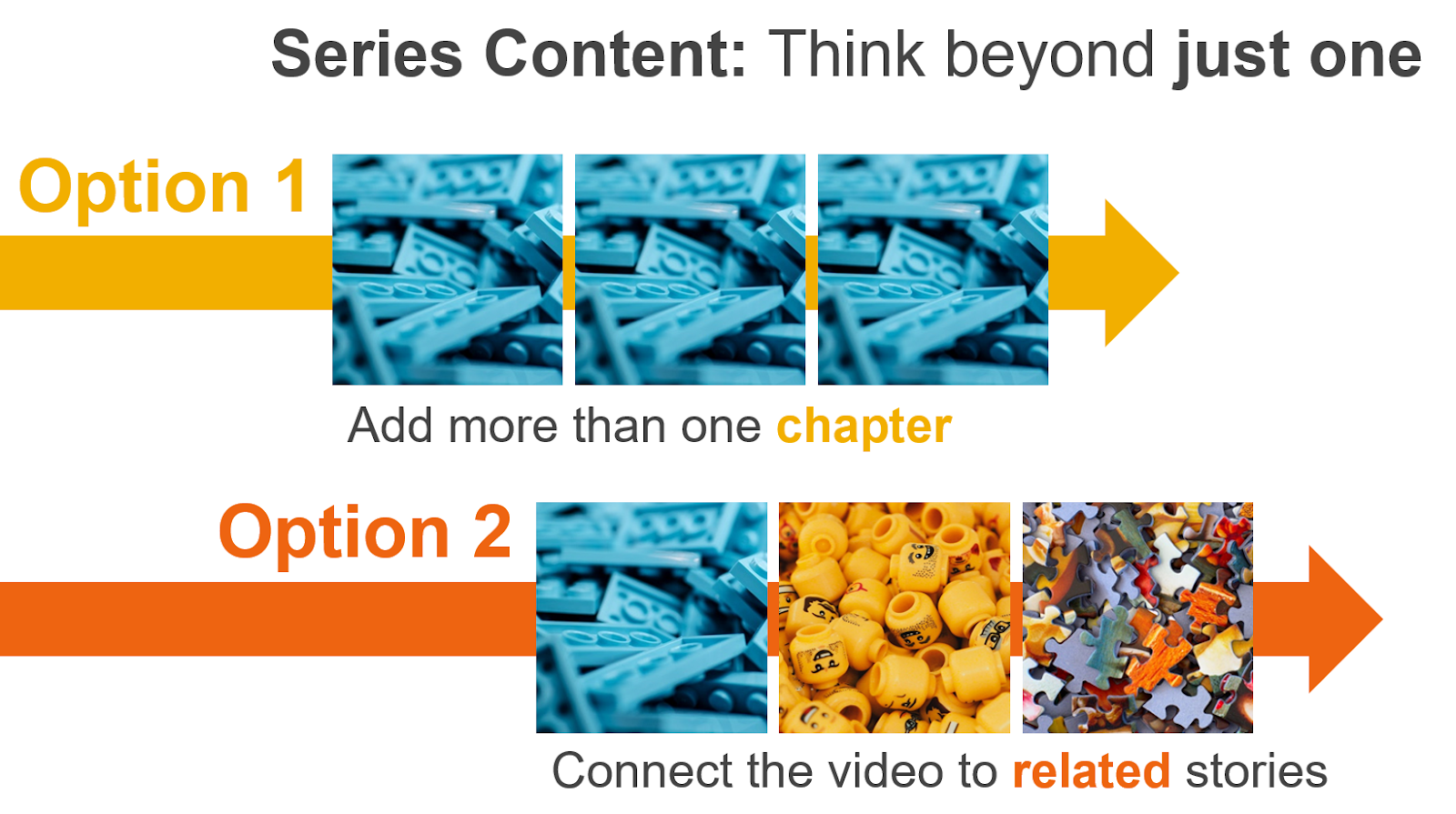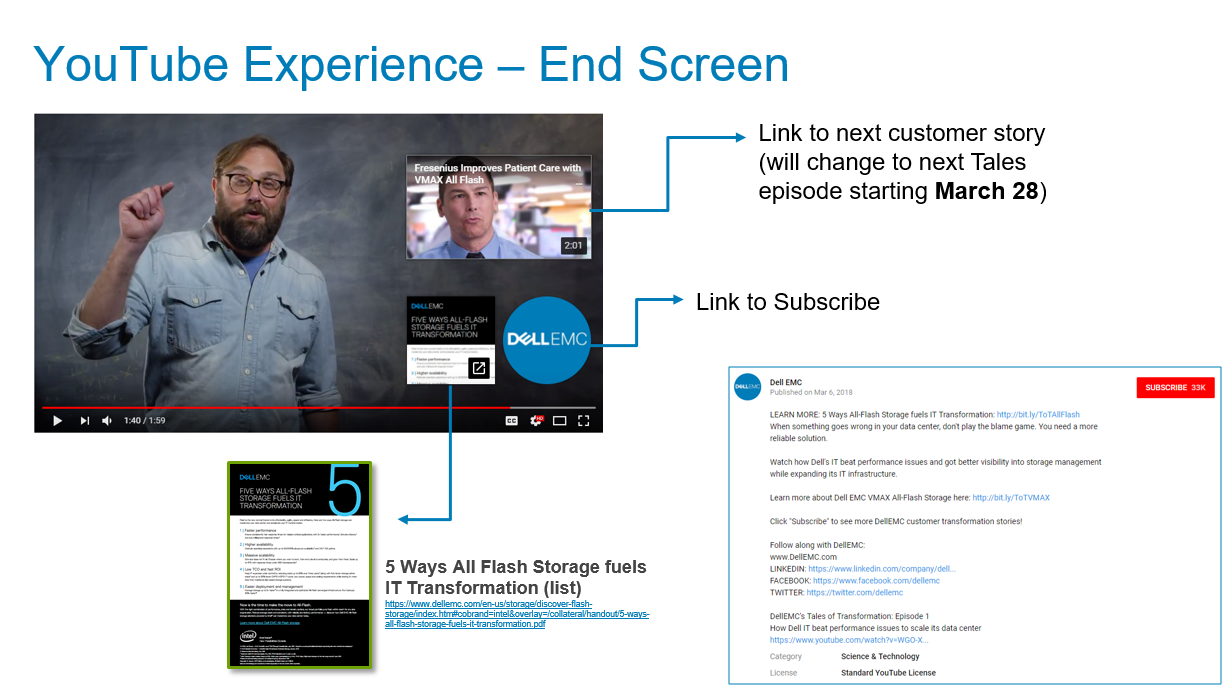3 Important Things to Consider Before Making a Video
There’s one phrase that I’d love to never hear again at work: “Let’s make it a video”.
You might be surprised to hear that coming from somebody who spent a good 13 years making videos. I love them: TV, film, or even a YouTuber explaining how to get the perfect smokey eye (which I still haven’t gotten right).
Why, then, is that phrase my biggest pet peeve?
Most people don’t think about WHY something needs to be a video.
They just decide they want one, throw money at it, then are shocked when it doesn’t perform well or add value to their lead generation programs.
Of course video in general performs super well versus other forms of content, so I can see why it’s tempting to go for it. However, that statistic is not enough of a reason to allocate budget to a production company--it’s a generality, not a guarantee. Just because something is in video form doesn’t mean it’s automatically going to drive demand.
If your plan is just throwing stuff in front of a camera to the tune of $85k a pop and hoping it gets a ton of social media engagement, you’re going to be in for a world of hurt. Unsurprisingly, your executive with zero media experience talking through a spec sheet in her office for 15 minutes is not going to be a viral success.
So what do you need to consider before making a video?
1. One video is not a strategy.
One of the big reasons why content strategy is a thing is that people like to binge. They are hungry for content, and if you’re not providing it, they’ll get it from somebody else. Probably your competitor.
Video is one of the most bingeable content formats. We’ve all found ourselves at 2am realizing we’ve just spent the last three hours watching cat videos (right? Just me?). When the video ends, you want people to continue watching your content. If they’ve stayed for one whole video, they’re very likely interested in more of the same. So give it to them!
Consider making a series of videos rather than just one-off. There are two different ways to go about series content:
Option 1. Add more than one chapter
This could mean following a customer story from beginning to end, or from more general info to more specific info.
Ex. 1: An in-depth “How To” series where you explore one step in detail each episode
Ex. 2: A customer story where each episode is a different stage of the buyer’s journey, going from higher level thought leadership on down to specs and results.
Option 2. Connect the video to related stories
Maybe this is several videos, each one about a different product but done in the same style. That makes it easy for the viewer to hop from one product video to the next and not feel jarred by the transition.
Ex. 3: A shoe company that has product videos about each different style they offer
Ex. 4: A makeup company that offers tutorials on different makeup looks
I want you to promise me now that you’ll never again consider making just one video, but that you’ll consider (and implement) these two options above.
There needs to be a reason for your videos...
...and that reason needs to be something other than “well we’re supposed to make more videos, so just make this white paper into one”.
If you only have enough source material for one video, consider carefully whether this is the ideal format. Think about whether that white paper really needs to get intimately involved with a production company out in LA--maybe it would translate better into a series of blog posts or an infographic that could be done internally.
There’s a time and a place for throwing budget at a video, but make sure that you build enough of a case for it so that you’re not wasting time and money.
Answer these questions first before jumping on the video bandwagon:
Does this really need to be a video, or could we do the same with another format?
Why does it need to be a video?
Is there enough source material for a series?
Is the source material something that our target audience is actually asking for?
Are there other videos on the same topic, and did they perform well?
Are there too many videos on the same topic (your video will get buried)? Or is the topic a ghost town (nobody actually cares)?
And finally, what is the viewer’s next step when the video ends?
The video needs to be part of a wider strategy.
That last bullet brings me to my final point: the rest of your content ecosystem. You need to be thinking about a couple things: what happens when the video ends, and how this series fits in with your other content in terms of brand.
2. What happens when the video ends?
It better not be a blank screen, or, even worse, a YouTube auto-play to a randomized video (seriously, do you want your competition benefitting from your own content?). All marketers and advertisers know about calls to action, but the number of companies I see not using CTAs in their video content is shameful.
Most video platforms allow for customized end screens--make sure you’re using them. At the very least, push to another episode. Ideally, it should link to supporting content hosted on your company’s website.
Screenshot of the distribution strategy I built out for Dell EMC’s "Tales of Transformation" video series. Read the full case study here.
3. How does this series fit in with your brand?
Your videos need to make sense with your other content: tonally, topically, and visually. Your video and the content it links to should fit together seamlessly, and it all should match the overall brand.
If a makeup company is super high end, then customers will expect high end videos and content to match. Let’s say I was looking at pricey makeup products and went onto the company’s corporate social handles or YouTube channel. If none of their content looked similar, or they had weird cartoony animations, or the quality of video production was Nokia-brick-phone level, I’d immediately lose interest. If they can’t handle the details of their content, why would I think they could handle the details of manufacturing high quality products?
On the other hand, if I’m looking at an indie makeup brand and their content is straight out of a Hollywood movie, it’s going to be a jarring experience and will raise questions: Why are their videos so slick when they’re making blush out of their living room? Are they more interested in directing films than creating products? Is their ultimate goal to launch a production company? Is somebody’s cousin doing them a favor?
You don’t want people questioning your business, whether it’s consciously or subconsciously. Questions equal complications. Complications equal abandoned carts.
Having such disparity between content and brand makes it confusing for the potential customer. The audience shouldn’t have to do all the work themselves to figure out what the deal is with your company--you should be making it easy for them. The best way to do that is to ensure that everything you put out, from products to content, makes sense together.
In conclusion, basically just think before you hire out a production company to turn that spec sheet into one 10 minute long snoozefest. Develop something that your target audience is actually hungry for, and make sure that you’re locking that audience in with additional episodes and complementary content so you can breed familiarity with your brand.





